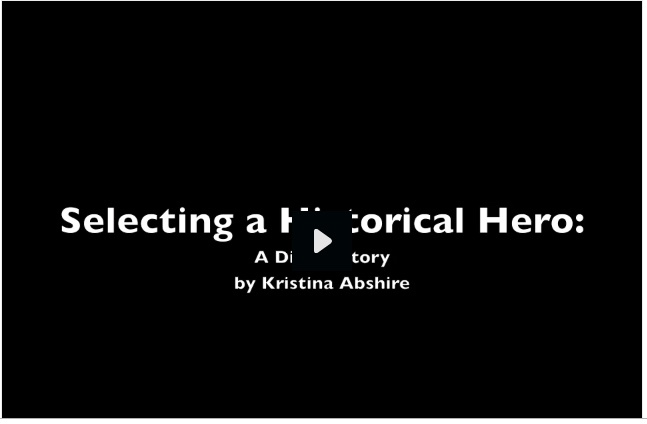Storytelling Practices and Strategies
Direct link to the "7 Elements in 4 Minutes" by Joe Lambert from the Center for Digital Storytelling.
This section and elements of Digital Storytelling may already be familiar to some of you. As you explore the idea of telling your stories to enhance your content area it is helpful to review the elements and strategies used by experts in the art of storytelling.
The focus in this learning unit is to apply the art of storytelling to your teaching, whether your audience is in an asynchronous or synchronous environment. The goal is to engage your audience through a story. It might be to set the stage, introduce or explore some content, concepts, and/or ideas through stories that are ‘told’ through the use of digital media.
STEPS
1. Watch the 7 Elements of Digital Storytelling in 4 minutes video at the top of this page.
- It will be helpful to use this template, Educational Features of Digital Stories Planning Document, to refer to as you watch and reflect on the video, as well as the content area stories shared in the sections below.
- Also consider using one of the rubrics below:
- Sample digital storytelling rubric (based on the work of teachers and Dr. Helen Barrett from the University of Massachusetts, Amherst)
- Read-Write-Think Digital Story Rubric
2. Next visit the Digital Storytelling site created and managed by Dr. Bernard Robin from the College of Education, University of Houston where the 10 features of educational digital stories are listed.
3. Now look at some educational examples.
- Select one (or more) examples in the "Three Content Area Digital Story Examples" section that follows. Experience how digital storytelling can 'set-the-stage' or capture students' interest in a topic.
Three Content Area Digital Story Examples
There are a wide variety of applications and free resources available that can be used for storytelling, with new ones appearing almost monthly.
Let's start by looking at three different examples of content area stories, Math, History and Science:
A Day Without Math (Direct link to this 3 minute video)
4. This time you will look at some examples created using two free and user-friendly storytelling tools, Microsoft Sway and Book Creator.
- It's easy to have time fly when exploring digital media stories. Try to limit yourself and spend five to ten minutes looking at one or two examples of each to get a feeling of how these have been used to tell an educational story.
- It may be helpful to have the Educational Features of Digital Stories Planning Document (from step 1) open to refer to as you look at these examples.
Examples using Book Creator or Microsoft Sway
Reminders:
- Think about how these have been used to tell an educational story.
- Refer to your Educational Features of Digital Stories Planning Document from Step 1 as you look at the different story examples.
Book Creator - Select one or more from the Subject Areas
- Use this link to scroll through the Subject Area section and select one to watch.
SWAY (Microsoft) - Pick one or both
- An example of a story about a school concert
- A lesson called Adapt & Survive (limit time to a short look as there is a lot of content)
5. OPTIONAL SECTIONS:
- Storytelling through Role-playing games - If you are interested in learning more about the use of games view the video in the following section.
- Storytelling in project-based learning
OPTIONAL: Role Playing Games As Storytelling Venues
Role Playing Games (RPG)
- Watch this 4-minute video by Du Bui as he introduces opportunities to tell stories through a game-like environment that can be used to tell a story.
- Gaming is taught in other courses.
OPTIONAL: Storytelling in Project-based Learning
The following video (7 minutes) “Storytelling in project-based learning” introduces a story structure.
They identified three essential questions when thinking about a story:
- What is the point of the story?
- Who am I telling the story to?
- Why am I telling the story now?
The 5 Parts of the Story Structure
Intro
- Context and setting in a positive light
- To elicit positive emotions
Problem
- Situation changes due to an unwelcome circumstance
- Altering the + and happy mood into a more sad or grim one
- Introduces the dramatic question
Reaction
- Response to the problem
- Series of creative events that ultimately lead to the solution
- Gradually evoke more hopeful emotions
- Describe the process they took in developing their solution
Solution
- Specify details of the solution and how it solves the problem
- Exciting part of the story
- Shows there is hope and a resolution
Ending
- Happily-ever-after part of the story
- What does the future look like?
- Outcomes? What will motivate and inspire the audience?
The final Steps was for students to write a script, place it into a storyboard and add images.
6. After experiencing these different examples and ideas, refer back to the Educational Features of Digital Stories Planning Document and the stories that stood out to you.
Reflect on:
-
How did the use of the digital story impact the learning experience for you?
-
Jot down in your notes some initial ideas of stories you could tell for some content you plan to teach.
-
What features of storytelling stood out and made a difference for your learning experience?
-
How could applying some of these storytelling elements to your own teaching make a difference?
Move on to Storytelling in Practice
Addressing Technology Standards for Educators
Addressing the ISTE Standards For Educators
Learner
1a. Set professional learning goals to explore and apply pedagogical approaches made possible by technology and reflect on their effectiveness.
1c. Stay current with research that supports improved student learning outcomes, including findings from the learning sciences.
Leader
2b. Advocate for equitable access to educational technology, digital content and learning opportunities to meet the diverse needs of all students.
2c. Model for colleagues the identification, exploration,
evaluation, curation and adoption of
new digital resources and tools for learning.
Collaborator
4b. Collaborate and co-learn with students to discover and use new digital resources and diagnose and troubleshoot technology issues.
4c. Use collaborative tools to expand students' authentic, real-world learning experiences by engaging virtually with experts, teams and students, locally and globally.
Designer
5a. Use technology to create, adapt and personalize learning experiences that foster independent learning and accommodate learner differences and needs.
5b. Design authentic learning activities that align with content area standards and use digital tools and resources to maximize active, deep learning.
5c. Explore and apply instructional design principles to create innovative digital learning environments that engage and support learning.
Analyst
7a. Provide alternative ways for students to demonstrate competency and reflect on their learning using technology.


